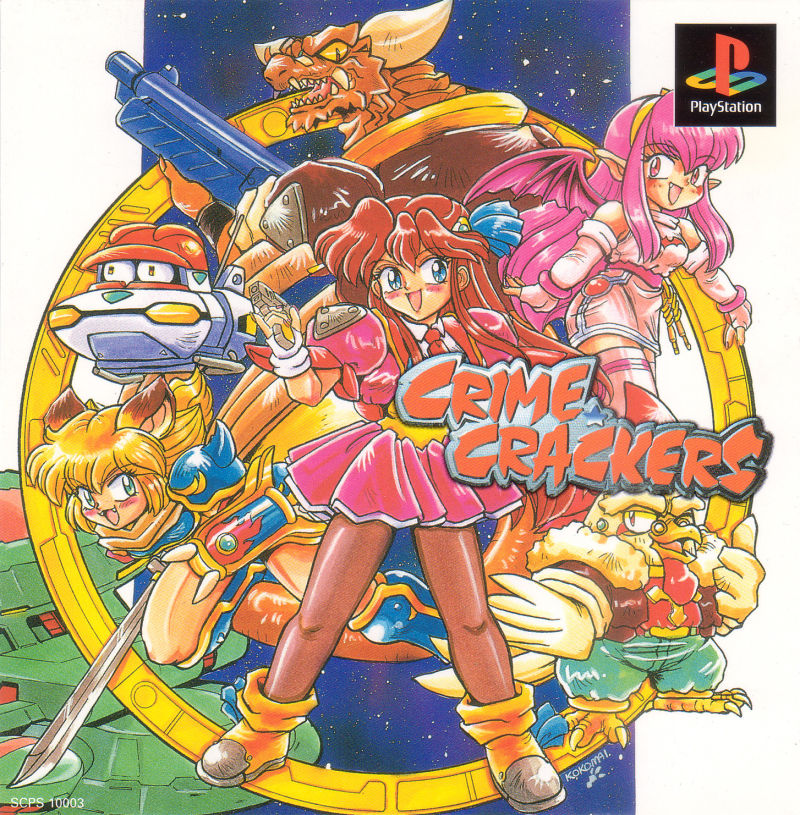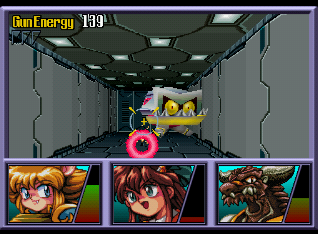11/4/2021
Review of Crime Crackers
Developed by: Media.Vision
1994, PlayStation

Crime Crackers is an FPS combined with an RPG made by Media.Vision, which makes it sound better than it is. Maybe the Media.Vision part is only relevant to some people like me who love Wild ARMs (10) and Wild ARMs 2 (9). I did enjoy that it has the same font and style for item icons as those games. However the JRPG elements don't really go beyond the fact that you have a party of three and an inventory. Having multiple characters just amounts to switching in the right one that makes the enemy easiest to fight, and they don't provide any other functions or differences than that. Crime Crackers 2 (7) at least would have a character with healing magic, and more reasons to switch between characters for their limited-use abilities.
Crime Crackers 2 also gave its stages at least some unique characteristics, like fighting a three-story tall dragon across different floors of a level. Compared to the levels in Crime Crackers, which are filled with right-angled hallways, and the only strategy is the Doom (7.5) method of looking for an enemy that isn't dead yet to know you haven't been that way.
The game's JRPGness does come through in the pacing of its action. Compared to a Doom-style FPS, the action in Crime Crackers is more turn-based. That's because you have to stop to aim. You also can't easily move around an enemy quickly to avoid its attacks, so you play the game by shooting, waiting for the enemy to shoot you, and then you shoot back. You have a depletable shield to block the attacks, and the amount of damage you take while blocking depends on your equipped armor. Each fight feels a little bit like a JRPG random encounter if you and the enemy both could only choose one option for an attack.

There is also a notable amount of anime. Interstitial scenes play between levels, and these along with the characters and the art design are the most appealing parts of the game. Outside of the anime scenes, most of the story is told in a single location with the characters standing in the same place delivering too many minutes' worth of dialog. I think games with a heavy anime aesthetic usually have a lot of static scenes with characters talking for too long. Somehow if a game has big chunks of writing it's a sign that they don't have anything to say.